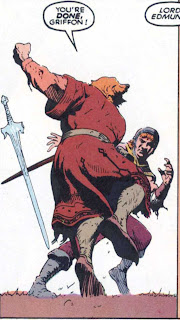It's December 1981, and the nights come earlier and the weather turns colder.
On the 14th, Hall and Oates release a single off their album Private Eyes titled 'I Can't Go for That (No Can Do).'
On the 14th, Hall and Oates release a single off their album Private Eyes titled 'I Can't Go for That (No Can Do).'
By the end of the month, this song is ubiquitous on the radio airwaves and MTV, and by the end of January the song goes to No. 1 on both the Billboard pop and R & B charts - quite an achievement.
The December issue of Heavy Metal magazine is on the stands. The cover illustration is a photograph (taken by Chris Stein) of 'Blondie' lead singer Debby Harry, in makeup and costume designed by the artist H. R. Giger. The back cover is 'Weekends Are Made for Balibob' by Thomas Warkentin.
The feature article for the December issue, written by Harry and her boyfriend and band-mate Stein, is a photo essay about their adventures with Giger, who provided the cover artwork for Harry's solo album KooKoo, released in July 1981.
Indeed, more cynical readers could get the feeling that the December issue is a thinly veiled advertisement for KooKoo. However, as it turned out, 1981 was the high-water mark for both Harry and Blondie; the following year the band would go through a rancorous break up, and would not re-form until 1997.
Elsewhere in the December issue are ongoing installments of Segrelle's 'The Mercenary', Corben's 'Den II', Findlay's 'Tex Arcana', 'At the Middle of Cymbiola' by Schuiten and Renard, and the final episode of Bilal's 'The Immortal's Fete'.
There are two outstanding one-shot pieces in this issue: a fine comic from Caza titled 'Skull and Crossbones', and 'Mirror of Dreams' by Paul Kirchner, which I've posted below.
'Mirror' features Kirchner's meticulous, clean-lined draftsmanship melded with a well-researched depiction of Japanese landscape, architecture, and cultural themes.











































































